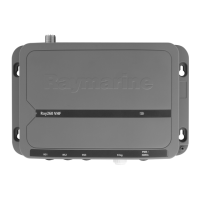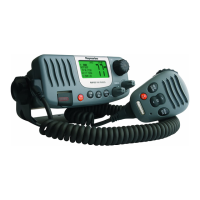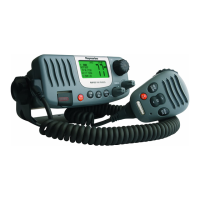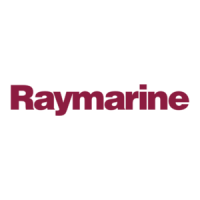What to do if my Raymarine Marine Radio will not power up?
- JjonesabigailJul 31, 2025
If your Raymarine Marine Radio isn't powering up, the issue might stem from a loose wiring connection or a blown fuse. First, check all cable connections to ensure they are secure. If the connections are solid, inspect the fuse and replace it if necessary.





